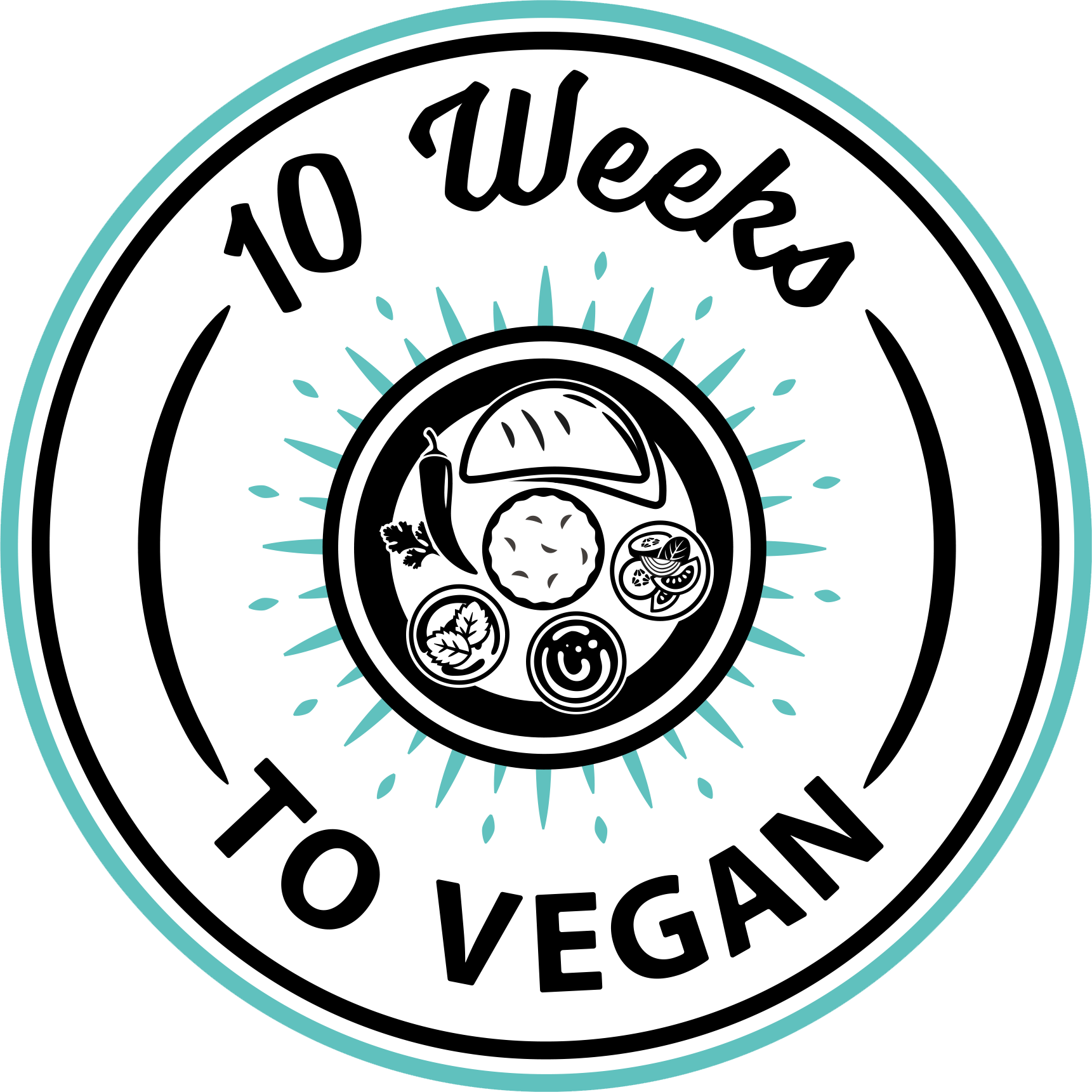“A vegan diet is probably the single biggest way to reduce your impact on planet Earth, not just greenhouse gases, but global acidification, eutrophication, land use, and water use.”
-Joseph Poore, Environmental Science Researcher, University of Oxford
Animal agriculture is one of the largest contributors to human-made greenhouse gas emissions, deforestation, water pollution, and air pollution. With so many alternatives available, it’s easier than ever to make choices that help the environment.
Take, for example, the vegan Beyond Meat Burger. A 2018 study from the University of Michigan found that a quarter-pound Beyond Burger is nearly identical nutritionally to a quarter-pound beef burger but generates 90% less greenhouse gas emissions, requires 46% less energy, 99.5% less water, and uses 93% less land compared to the production, packaging, and distribution of US beef (2).
Read on to find out more about how a vegan diet can benefit the environment.
Greenhouse Gases
A 2018 study found that meat and dairy production produces 56-58% of agriculture’s greenhouse gas emissions while providing just 18% of calories and 37% of protein (Science; (1). Another recent study reaffirmed these figures, finding that animal agriculture is responsible for 57% of agriculture-related greenhouse gas emissions. (Nature Food, 2021; (16).
Multiple reports have found that a vegan diet has the most potential for reducing greenhouse gas emissions. One such example is the most recent report from the UN’s Intergovernmental Panel on Climate Change (2019), which emphasized a shift towards plant-based diets as a major opportunity to limit greenhouse gas emissions (3).
A 2020 study reported in Nature Sustainability found a high carbon opportunity cost of animal agriculture such that the land displaced by animal foods has the potential to sequester 152.5 gigatons of carbon (GtC) in living plant biomass if humans switched to eating vegan (6). Ruminant animal pastures for meat and dairy account for 72% of the carbon while animal feed croplands make up the other 28%. This amount of carbon represents the past decade of fossil fuel emissions and the researchers considered it comparable to the reductions necessary to limit global warming to 1.5°C.
A study from the University of Michigan and Tulane University (2020) estimated that replacing half of all animal-based foods with plant-based foods could result in a 35% decrease in diet-related emissions in the U.S. That would result in reducing roughly 224 million metric tons of emissions annually—the same amount as 47.5 million passenger vehicles—by 2030 (14). Even replacing just one animal product—beef for beans—would have a significant impact in contributing to climate goals. A 2017 study published in Climatic Change found that if the entire US population switched from beef to beans in their diets, the US would meet between 42 and 74% of the US GHG reduction goal for 2020 (15).
A Lancet report (2019) compared models of change in food production and estimated reduction in greenhouse gases and found that a shift to plant-based diets could reduce food-related emissions by up to 80% by 2050 (4). Vegan diets have the greatest potential for reducing greenhouse gas emissions—by up to 35 to 50% (Scientific Reports, 2019; (5).
Calculations by Our World in Data (2020) show that producing 100 grams of protein from peas emits 0.4 kilograms of carbon dioxide equivalents while producing that same amount of protein from beef would emit almost 90 times as much (8). Of all sources of protein, plants have the lowest carbon footprint, regardless of production methods. Even when comparing emissions from the lowest-impact meat and dairy producers to the highest-impact plant producers, plant-based protein sources consistently have a smaller carbon footprint (8).
Water
While 783 million people worldwide don’t have access to clean drinking water, animal agriculture uses nearly 1/3 of drinking water available (Water Resources and Industry, 2013) (9).
A 2016 study published in Science of the Total Environment compared the traditional Mediterranean diet with animal-based products, pesco-vegetarian diets, and vegetarian diets and found that vegetarian diets had the lowest water footprint—with a reduction of 30-53% (10).
A systematic review published in the Public Library of Science (2016) looked at a variety of common, sustainable diets compared to the standard Western diet. They found that vegan diets used the least amount of water, and that diet changes can reduce water use by 50%. This review also found that greenhouse gas emissions and land use could be reduced by as much as 70-80% (10).
Land
Worldwide, meat and dairy production uses 83% of farmland but provides just 18% of calories and 37% of protein (Science, 2018) (1).
Animal agriculture is one of the leading causes of deforestation. The environmental impact of animal agriculture, including through “sustainable” methods, is much higher than plant production. A 2018 University of Oxford study showed that even the lowest impact meat and dairy products cause more environmental damage than the highest impact vegetable and cereal products. For example, low-impact beef uses 36 times more land than peas (1).
The same study showed that if everybody stopped eating meat and dairy products, worldwide farmland use could be reduced by 75%—an area equivalent to the size of the US, China, Australia, and the EU combined (1).
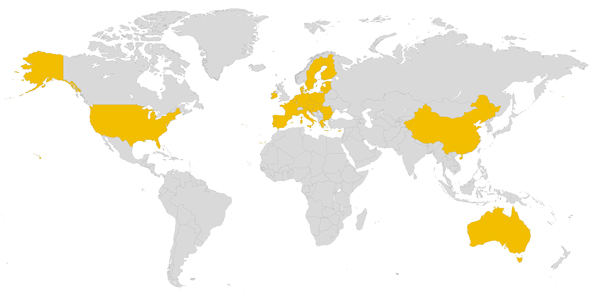
Nearly two-thirds of all soybeans, corn, and barley crops and about one-third of all grain crops are used to feed animals, so reducing animal product consumption would make the land used for feed production available for other uses (Lancet, 2019) (4).
Researchers at the University of Wisconsin-Madison (2018) compared the land use of each individual animal-based food item in the US food system with that of a nutritionally comparable plant-based alternative. They found that replacing all animal-based products could sustain 350 million additional people. They also found that an area of land that could produce 100 grams of edible protein from plants could only produce 60 grams of edible protein from eggs, 50 grams of protein from chickens, 25 grams of protein from dairy, 10 grams of protein from pigs, and just 4 grams of protein from beef (11).
A 2017 study published in Climatic Change also analyzed land use in the US. They found that if the entire US population switched from beef to beans in their diets, up to 692 square kilometers, or 42% of US cropland, would become available (15).
Pollution and Environmental Racism
Hog and dairy farms produce enormous waste, which is stored in lagoons and then sprayed on fields. The Sierra Club (2017) (12) reports:
If waste is sprayed too often, it saturates the soil and leaks into the aquifer and nearby rivers and streams. The practice also aerosolizes fecal matter, creating toxic particulates that get blown onto nearby homes, accompanied by a terrible stench that drives residents indoors. A majority of those homes belong to African Americans, who have had their property drenched in hog waste for decades and their wells polluted, too.
For 30 years, their complaints about the effect on their health and quality of life have mostly fallen on deaf ears at the [North Carolina] statehouse—making this a clear case of environmental racism with quantifiable human cost.
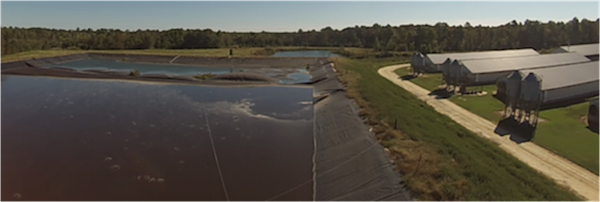
The Sierra Club quotes residents living near hog waste lagoons:
[Hog waste] comes over here just like it’s raining. That’s what we inhale if we’re outside, and it comes inside the house because you can’t keep that odor out. We don’t have cookouts or family get-togethers like we used to, because we don’t know when the odor is gonna come. When it’s really hot, it burns your eyes.
Summary
Animal agriculture is not a sustainable system—your environmental footprint can be drastically reduced on a plant-based diet!
Download a printable PDF of this article:
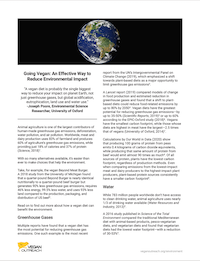
References
1. Poore J and Nemecek T. Reducing food’s environmental impacts through producers and consumers. Science. 2018 Jun 1;360(6392):987-92.
2. Heller M and Keoleian G. Beyond Meat’s Beyond Burger Life Cycle Assessment: A detailed comparison between a plant-based and an animal-based protein source. CSS Report, University of Michigan: Ann Arbor. 2018 Sept 14. 1-38.
3. Masson-Delmotte V, Pörtner H, Skea J, Buendía EC, Zhai P, Roberts D, Shukla P, Slade R, Connors S, Diemen R, Ferrat M, Haughey E, Luz S, Neogi S, Pathak M, Petzold J, Pereira JP, Vyas P, Huntley E, Kissick K, Belkacemi M, Malley J. Climate Change and Land: an IPCC special report on climate change, desertification, land degradation, sustainable land management, food security, and greenhouse gas fluxes in terrestrial ecosystems. 2019 Aug 8.
4. Willett W, Rockström J, Loken B, Springmann M, Lang T, Vermeulen S, Garnett T, Tilman D, DeClerck F, Wood A, Jonell M. Food in the Anthropocene: the EAT–Lancet Commission on healthy diets from sustainable food systems. The Lancet. 2019 Jan 16.
5. Eshel G, Stainier P, Shepon A, Swaminathan A. Environmentally Optimal, Nutritionally Sound, Protein and Energy Conserving Plant Based Alternatives to U.S. Meat. Scientific reports. 2019 Aug 8;9(1):1-1.
6. Hayek, M.N., Harwatt, H., Ripple, W.J. et al. The carbon opportunity cost of animal-sourced food production on land. Nature Sustainability (2020).
8. Ritchie, H. Less meat is nearly always better than sustainable meat, to reduce your carbon footprint. Our World in Data. 2020 Feb 4.
9. Gerbens-Leenes PW, Mekonnen MM, Hoekstra AY. The water footprint of poultry, pork and beef: A comparative study in different countries and production systems. Water Resources and Industry. 2013 Mar 1;1:25-36.
10. Vanham D, Del Pozo S, Pekcan AG, Keinan-Boker L, Trichopoulou A, Gawlik BM. Water consumption related to different diets in Mediterranean cities. Science of the Total Environment. 2016 Dec 15;573:96-105.
11. Aleksandrowicz L, Green R, Joy EJ, Smith P, Haines A. The impacts of dietary change on greenhouse gas emissions, land use, water use, and health: a systematic review. PloS one. 2016 Nov 3;11(11):e0165797.
12. Shepon A, Eshel G, Noor E, Milo R. The opportunity cost of animal based diets exceeds all food losses. Proceedings of the National Academy of Sciences. 2018 Apr 10;115(15):3804-9.
13. Skolnick A. The CAFO Industry’s Impact on the Environment and Public Health. Sierra Club. 2017 Feb.
14. Heller M, Keoleian G, Rose D. Implications of Future US Diet Scenarios on Greenhouse Gas Emissions. CSS Report, University of Michigan: Ann Arbor 2020 Jan 13;1-24.
15. Harwatt, H., Sabaté, J., Eshel, G., Soret, S. and Ripple, W. (2017), ‘Substituting beans for beef as a contribution toward US climate change targets’, Climatic Change, 143(1–2), doi: 10.1007/s10584-017-1969-1.
16. Xu, X., Sharma, P., Shu, S. et al. Global greenhouse gas emissions from animal-based foods are twice those of plant-based foods. Nat Food 2, 724–732 (2021). https://doi.org/10.1038/s43016-021-00358-x.
